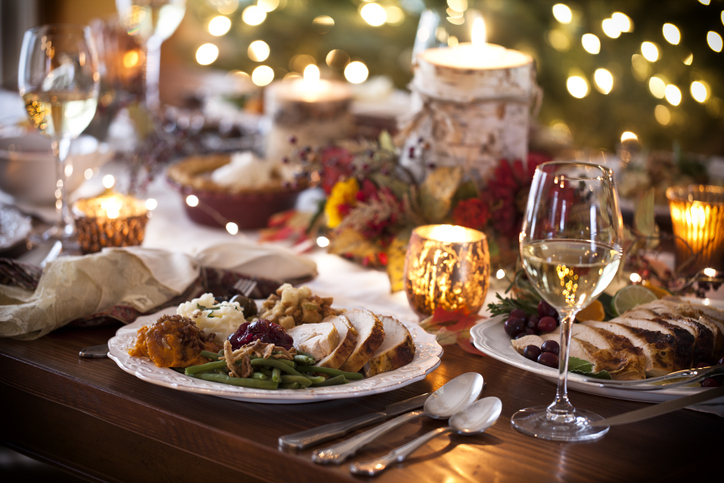 The time for holiday gatherings with family and friends is approaching. Holiday meals handled and prepared in an unsafe way can put a damper on the event. Here are some ideas on how to prevent contamination and food borne illness at this special time of the year.
The time for holiday gatherings with family and friends is approaching. Holiday meals handled and prepared in an unsafe way can put a damper on the event. Here are some ideas on how to prevent contamination and food borne illness at this special time of the year.
- Wash hands with soap and water at the beginning and end of a task. Hand sanitizers are not the best way to the get rid of dirt or germs; hand washing is.
- Clean all kitchen surfaces with soap and water and sanitize.
- Have different cutting boards for meats and vegetables.
- Use separate spoons and forks to stir, taste, and serve food.
- Always use a thermometer; insert into the thickest part of meat or prepared dish and cook to the following internal temperature, with three minutes rest time:
- Poultry (whole and ground): 165°F
- Beef, pork lamb, veal: 145°F + 3 minutes rest time
- Eggs dishes: 160°F or until yolk and whites are firm
- Stuffing: 165°F
- Leftovers and casseroles: 165°F
- Ground beef: 160°F
- Seafood: 145°F cook until flesh is opaque and separates easily with a fork
- Place cooked food in a clean container and never baste food with the uncooked marinade.
- Do not overcook meats or char (burn). Cooking at high temperatures can lead to carcinogen formation. Marinating may reduce the formation of these compounds.
- Defrost frozen meats in the refrigerator, or the microwave, never on the kitchen counter.
- Refrigerate leftovers within two hours.
- Store leftovers in shallow containers, no more than 2 inches deep.
- Keep food in a clean refrigerator under 40°F. Freeze at 0°F or less.
- Do not add new food to an already filled serving dish.
Stay safe and enjoy the holidays!
You can download and use the following chart for reference.
 safe cooking temps chart.pdf
safe cooking temps chart.pdf
Sources:
1. Food Safety by Events and Seasons https://www.foodsafety.gov/keep-food-safe/food-safety-by-events-and-seasons Accessed November 20, 2020
2. Safe Minimum Cooking Temperatures Charts https://www.foodsafety.gov/food-safety-charts/safe-minimum-cooking-temperature Accessed November 20, 2020
3. Chemicals in Meat Cooked at High Temperatures and Cancer Risk, National Cancer Institute, at the National Institute of Health. http://www.cancer.gov/cancertopics/factsheet/Risk/cooked-meats Accessed November 2020
 OTHER LANGUAGES
OTHER LANGUAGES
 OTHER LANGUAGES
OTHER LANGUAGES